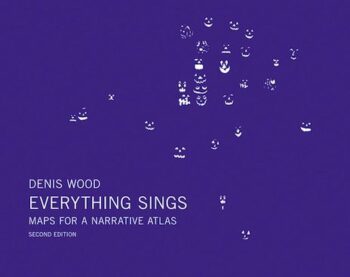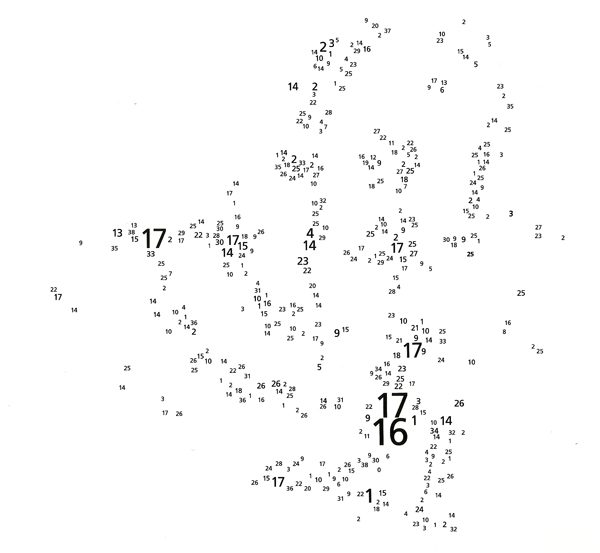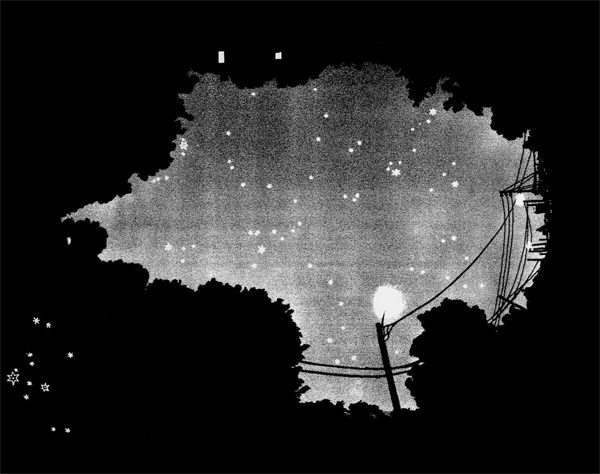
In 1913, the American public first encountered the modernism movement during the notorious Armory Show in New York. The art exhibit, brought over from Europe to introduce Americans to a new school of artists, featured a urinal displayed as sculpture and called “Fountain.” It featured cubist paintings showing multiple views on a subject at once. It captured abstract figures in motion. It was, most art historians agree, one of the most important and upsetting moments in art in centuries, sending critics and attendees into toddler-caliber meltdowns as all of their preconceptions about art were given the symbolic finger. “That’s not art!” they protested loudly, clutching their realistic still-lifes of fruit and bucolic landscapes white-knuckled as they ridiculed Armory Show artists like Picasso, Duchamp, Cezanne, and Matisse. But the modernist movement had been set in motion, was gaining momentum, and there was no recalling it. In fact, this year, exactly one hundred years after the Armory Show, The New York Historical Society Museum is commemorating that explosive moment in cultural history by showing many of the major artworks of the original exhibition, works that the public today readily accepts as masterworks. Since that moment in 1913, modernism has swept almost every art form, from fashion to architecture to music to literature, destroying limited conceptions of what is valid and permissible in art.
Key word: almost. Somehow, it missed infiltrating an important artistic medium during its first pass through culture; namely, mapmaking. But one man in the 21st century has worked hard to change that by yanking the art of cartography out of the 19st century closet and bringing it, finally, to the party. Late entrances are fashionable, no? A century after modernism’s grand arrival at the Armory Show, maps finally get their due with Denis Wood’s groundbreaking atlas, Everything Sings, recently re-released in an expanded 2nd edition with ten new maps, an interview with Wood, and companion essays by Ander Monson, Albert Mobilio, and This American Life’s Ira Glass (who can be credited with bringing Wood to the public’s attention on NPR’s popular show).
Everything Sings: Maps for a Narrative Atlas ventures boldly in the spirit of Ezra Pound’s modernist rallying cry, “make it new.” You won’t find any street names or typical landmarks on the maps in this book. Instead you will encounter various patterns mapped onto a neighborhood that tell the story of the community of people who live there. This reinterpretation of an atlas exhibits the tenets of modernism on many levels, beginning with the fundamental premise that the concepts of a fixed reality and objective truth are false constructs. With every page of Wood’s collection that maps the “unmappable” in his North Carolina neighborhood of Boylan Heights, it becomes increasingly clear that that here is an exciting and remarkable mind at work which seeks to challenge the reader to reconsider not just what can be done with a map, but to reconsider the entire definition of a map as we know it. This is the kind of atlas that, one hundred years too late, would make the public shout, “That’s not an atlas!” This is an atlas for the 21st century, a narrative atlas, an atlas unfolding into an ever-deepening essay. With the recently released 2nd edition, we see the themes of this work developed even further, as the atlas changes and grows and the narrative is complicated in new ways. Ezra Pound would be proud.

Wood asks us to abandon the restrictive notion of maps as a record of fixed facts entirely—the street names, the distances, the points of reference—and instead invites us to see the maps as a narrative record of intangibles, of fleeting moments in time, of the collective character of a community, of sounds and the mottled patterns of leaves on the ground. “It’s been claimed for centuries,” writes Wood, “that atlases are works of reference where you go to find facts… Admitting that atlases were narrative—that they were texts—would force the admission that maps constituted a semiological system like those of paintings or novels or poems.” Wood tells us that maps are “involved in storytelling, they’re not compendia of facts.” It’s an intriguing, exciting notion in context of a history where maps have not been viewed in that light. Consider, for example, maps of historical trading routes layered with maps like explorer routes, the slave trade, Native American settlements, Civil War battles, and the areas of concentrated ethnic groups and poverty or wealth in North America today. In context of one another, these maps would no longer be seen as fixed maps, but chapters of an evolving, interrelated narrative, each map representing a moment in history as seen through the lens of things like racism, imperialism, and class, and each map drawn by a subjective mapmaker with a biased point of view. To further illustrate Wood’s point that maps do not reflect fixed facts, consider a 1620 map of North America drawn by Native Americans presented side by side with a 1620 map of North America drawn by British mapmakers. Two very different narratives would be presented. Which map reflects “the truth”? Is there any such thing as an objective map?
Still, it is hard for people to release long-held notions. Perhaps on a subconscious level, the concept of maps as providing us some authority, guidance, and structure in a chaotic and scary world is a comfort not readily relinquished. Whatever the reason, it’s been a long road for Wood to gain any traction with his reconceptualization of mapmaking—some forty years, in fact. Frustrated with the way the modernists of the early 20th century had deconstructed most other artistic disciplines by “smashing traditional forms”, yet had completely overlooked cartography, Wood turned toward correcting their oversight obsessively in the ’60s and ’70s as a geology grad student. While traditional academic institutions had trouble with his nose-thumbing defiance of the standards that institutional scholarship is based on, Wood eventually found himself teaching environmental perception to landscape architecture students, and with those students, he began to construct the various maps that comprise Everything Sings. Wood and his students went into Boylan Heights and removed the street names, then the streets, then all traditional points of reference on a map, and instead started mapping the narrative of the community. The paperboy’s route, the distribution of newsletters, the sound of windchimes, the movement of landlords, graffiti, 911 calls, jack-o-lanterns on Halloween. And patterns began to emerge and evolve in the relationships between those maps. In those patterns is where Wood turns this atlas into an essayistic gesture, when the maps begin to layer as a cohesive narrative, working together as a story that unfolds progressively for the reader as it begins to become clear how the maps connect to one another.

The layering allows us to see similar areas of concentration on the maps: the most jack-o-lanterns, the most newsletters, the least graffiti, the most wooden fences, the fewest chain-link fences. This tells us about the community and exposes some deeper narratives, such as the story about affluence and poverty in Boylan Heights. Suddenly, a dearth of jack-o-lanterns or newsletters in the same areas where property values are lower becomes an interesting story about wealth and lack in the community. A further map of absentee landlords that clearly shows their upward mobility to other areas adds another layer to this narrative. “The map-essay on the causes of poverty that pretends not to be an essay at all is a uniquely powerful way to naturalize poverty,” writes Wood. “It suggests that poverty arises naturally from the earth itself, that there is nothing we can do about it.” Indeed, Wood rejects the notion of fixed facts inherent in the landscape in favor of a subjective, moving narrative. We see this impermanence in the map of all the known dogs in the neighborhood, an added map to the second edition. In the accompanying text, Wood writes, “They’re the 1975 dogs and none of them may have been among the ones barking when those were mapped in 1982. Dogs die. People move in and out. Boylan Heights never stops changing.” In an interview Blake Butler conducted with Wood, also included in this edition, they discuss how maps can never really be finished due to that fact, as they mark moments, not fixed things. Wood points to weather maps which are updated several times an hour as the most obvious examples of this “continuous, ongoing, real-time mapping.”
Toward Wood’s goal of creating modernist maps, that notion of capturing a fleeting moment in time rather than a stagnant reality is a basic premise of the modernist movement, which espouses the rejection of one objective reality in favor of the idea that there are many truths that can be held simultaneously because life is a subjective experience. Wood writes about the map of the Boylan Heights night sky, something already fleeting because its shape and view changes with the foliage of the trees: “You know, times change. And because they do, maps become historical documents the moment they’re made… It’s there in The Night Sky [map] in the fact that a couple of us were able to lie on our backs in the middle of Boylan Avenue at 10:00 p.m. in the early part of July… You’d be run over if you tried that today since, compared to that of 1982, the traffic pattern has effectively rotated 90°.” It’s important to Wood that we know that each of these maps is the record of a living, changing thing, life in motion rather than fixed, much like Marcel Duchamp’s seminal modernist painting, “Nude Descending a Staircase,” that had New Yorkers in such an uproar in 1913. Indeed, that’s why the text accompanying these maps is important for Wood to include as part of the atlas-essay, because what he is essaying is the idea of mapping all of the elements that are subjective and specific to that moment in time. He asserts that the moment will never be the same and a map that can never be reproduced accurately again because of the impermanence in time. There is a specific reason he tells us in the text accompanying the night-sky map that “it was about ten o’clock and the asphalt was still warm with the day’s heat.” It’s what makes this night sky map a different map than the same night sky a year later; Wood is mapping a subjective experience, not facts, a wholly modernist notion.
Another decidedly modernist element to this atlas is the deconstruction of form. It undercuts the rules of traditional mapmaking in much the same way as the modernists undercut the formal rules of their respective genres. Pablo Picasso, in his series of paintings of bulls in 1945, systematically simplified the rendering of a bull from a fairly realistic, fully fleshed out animal, down to an elemental line drawing. Modernist poets like e.e. cummings broke with tradition and deconstructed language down to the essence of what they were trying to say without the formal constraints of generations of realism. Denis Wood has done the same with his maps, jettisoning the formal parameters that dictated cartography for decades. For Wood, this is a political statement against the systems of oppression set in place by a western society. In the introduction to the atlas, he writes about being opposed to the draft in the ’60s, just as the Modernists had opposed historical systems of war and oppression. “Modernism came with a predisposition for… going someplace stripped down, essential, real… I wanted to destroy the existing modes of mapmaking through which millions were killed,” writes Wood. Removing the fabricated borders that define “ownership” and delineate power on a map, then, dismantles the structures underlying oppression and violence, in Wood’s eyes.

While maps and atlases have enjoyed a recent surge in popularity as creative forms for literary exploration (Rebecca Solnit’s Infinite City and Judith Shalansky’s Atlas of Remote Islands spring to mind), Wood pushes his readers much further conceptually than his contemporaries, and did so for decades before the rest of them began playing with cartography as a potential literary form. Where their individual maps can often stand alone, Wood’s maps rely on one another to work cohesively as a narrative essay, and this is part of the charm of Everything Sings. Like the different elements of a building narrative, these maps rely on one another to deepen the image that we get of this community as a whole. In an interview with Ira Glass for the radio show This American Life, Wood states, “What you do as you go through these maps is you begin to build up, even though it’s never said, the kind of structural knowledge that you take away as a resident of that neighborhood… You know, the idea that we have to have the pumpkins drawn against the street only makes sense if you don’t have any other images. But as soon as you have other images, you say ‘Oh my Lord, look. Look where these pumpkins are. They’re exactly where people are mentioned all the time in the newsletter.” Ira Glass interjects to point out that maps are selective about presenting just one small slice of the world and therefore cannot tell us everything. Wood responds, “Sure. And that’s why I’ve produced an atlas.”
If we want to judge artistic works through the lens of Ezra Pound’s “make it new” that asks what a work of art is doing that hasn’t been done before, then Everything Sings clearly stands out in the freshness of its ideas. Rarely are we still offered the opportunity to sit up and feel that thrill of a completely new conceptual perspective. Just like the first time a young art student learned that cubism emerged from the attempt to literally see an object from multiple angles at once, just like an audience first experienced John Cage’s 4 minutes and 33 seconds and understood the concept of learned bias toward “legitimate” sounds labeled “music” versus ambient sound labeled “noise,” so can a reader experience that same excitement about an idea when she sits down with this book and it begins to dawn on her what Denis Wood is getting at with his odd, streetless maps of a neighborhood. As Ira Glass aptly noted in his introduction essay to this edition of Everything Sings, a reader quickly begins to notice “the oddest thing about these maps. They describe human lives without ever showing us any people.” This is an atlas for the thinking man or woman. Denis Wood offers us a glimpse above or beneath the grid of street names and surface points that we are accustomed to identifying as the “important” information on maps. “[T]here is no ‘real deal’,” Wood tells us. What he offers us instead is a living, shifting, and beautifully poetic mapping of humanity. “There is only this starlight falling tonight on these asphalt streets,” he says. “None of our maps pretend to catch more than a note or two of a world in which everything’s singing.”




